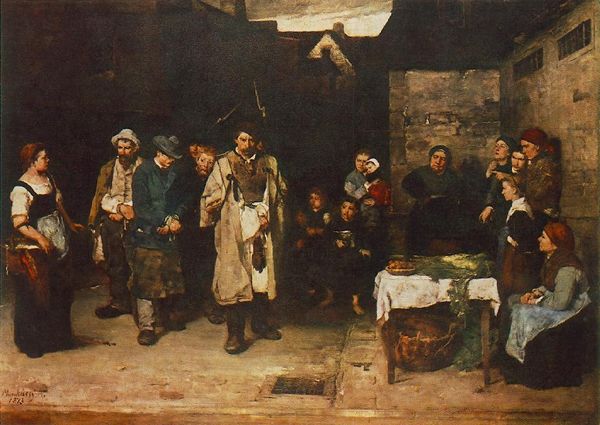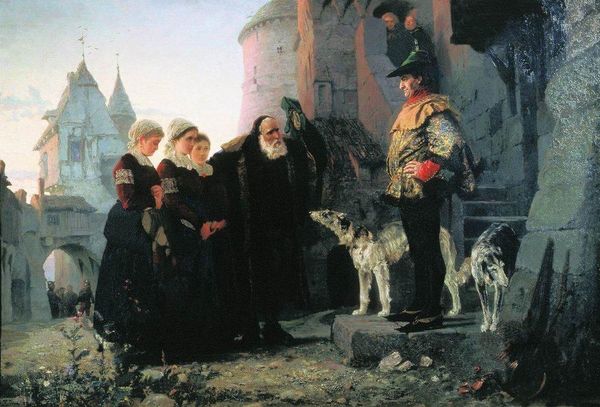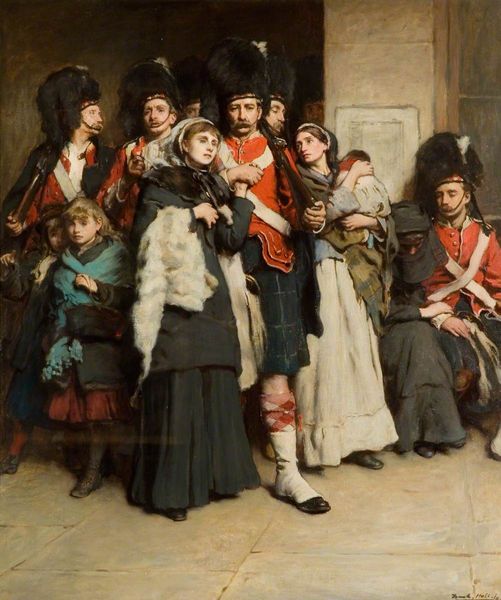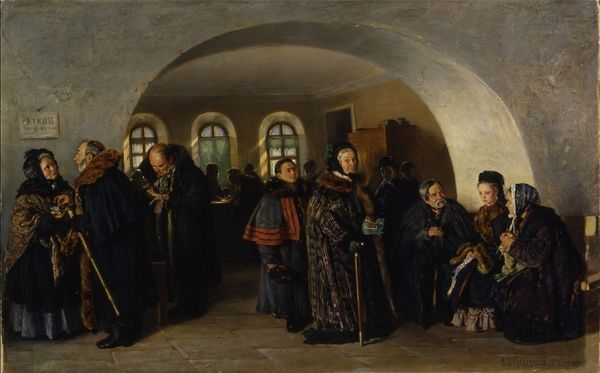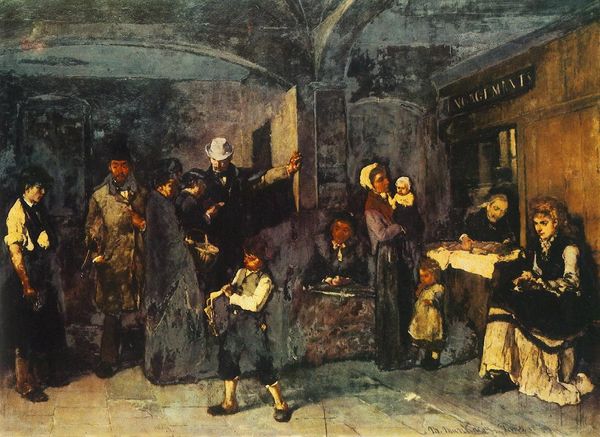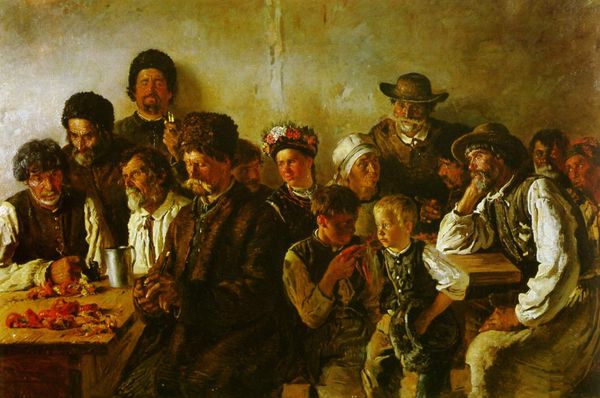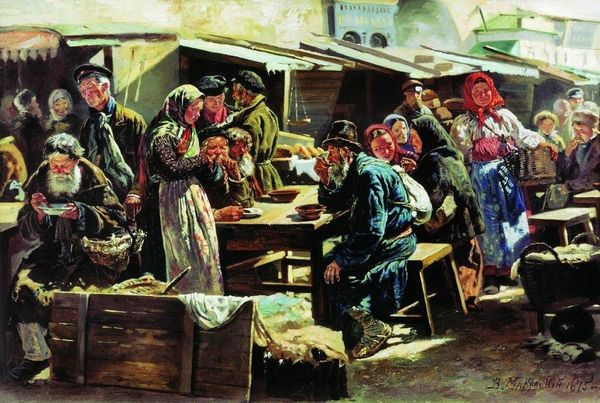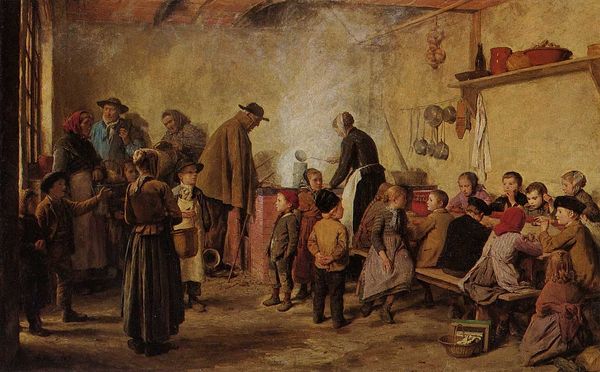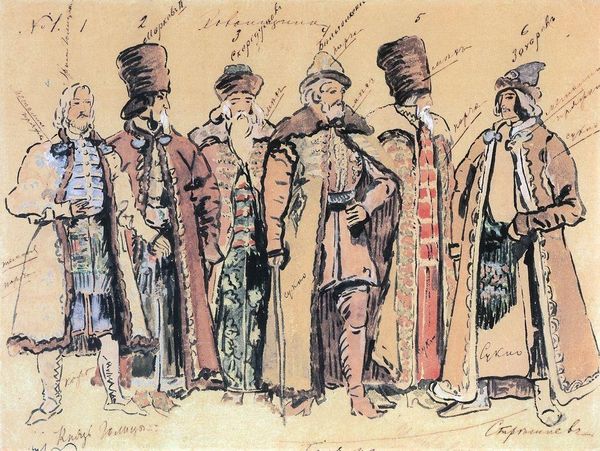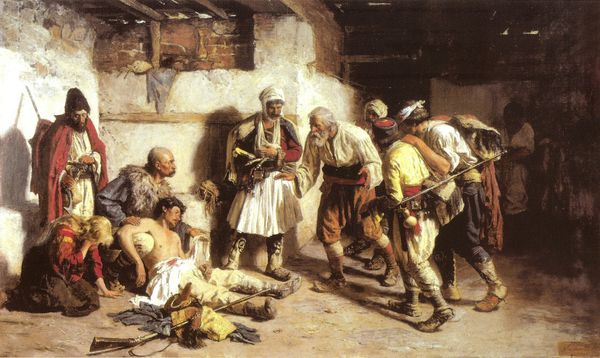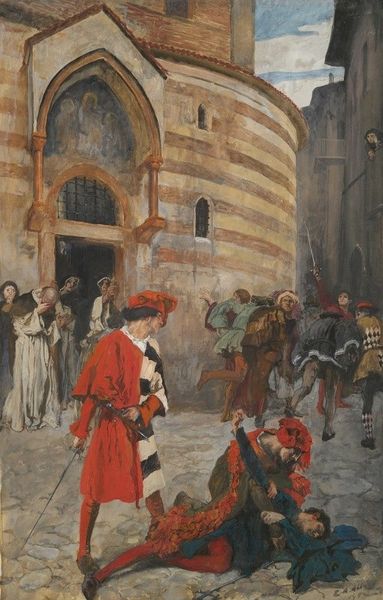
Dimensions: 76.5 x 113 cm
Copyright: Public domain
Editor: Vladimir Makovsky’s "The Condemned," painted in 1879, presents a somber scene. The figures are tightly packed, and there's a heavy atmosphere of despair. What sort of historical symbols or social commentary might Makovsky be weaving into this narrative? Curator: The weight you feel is meticulously crafted. Consider the figure at the center, "the condemned." He is literally elevated, a stage for societal judgment. Look at how he is dressed. What do his clothes signify to you in contrast to the guards? Editor: The condemned man is wearing a simple, almost peasant-like robe, while the guards are adorned in elaborate military uniforms. It definitely speaks to a stark social divide. Is he being judged by class as much as anything else? Curator: Indeed. The artist is using costume as a powerful signifier of status and power. Consider also the women, their faces etched with grief. Who do they represent, and what cultural memory do they evoke? The cultural symbolism tied to mothers, wives, sisters in the face of injustice is profound. The weeping women reference shared grief of loss and societal injustice. This tableau wasn't merely a depiction but an appeal to a shared understanding of oppression. It is the same story told throughout history in many different guises. Editor: So it’s a more universal statement than just one specific incident? Curator: Precisely! Makovsky is not just documenting, he's composing a lament. He’s painting the symbolic weight of oppression itself. And you feel this strongly through the symbols that resonate to this day. Editor: This has definitely made me consider the visual vocabulary artists employ, using things like clothing and expressions as historical and emotional touchstones. Curator: And how these visual cues transcend time to tell a human story. The signs are all around us.
Comments
No comments
Be the first to comment and join the conversation on the ultimate creative platform.

